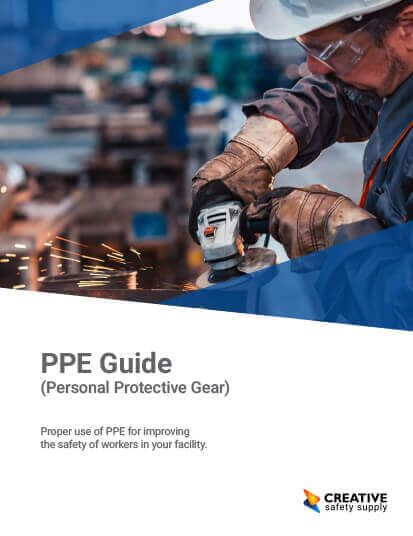
The two different types of hearing protection are ear plugs and ear muffs, both designed to reduce the amount of noise entering the ear. Disposable ear plugs are easy, affordable, and get the job done in environments with lower levels of noise. In cases where loud noises and extended periods of noise, ear muffs are the way to go. Ear muffs cover the whole ear, preventing noise from entering while keeping the worker comfortable. Ear muffs commonly feature sound reducing foam and are designed to be worn all day if needed.
Providing workers with proper hearing protection is crucial to prevent irreversible hearing loss. The two types of hearing risks associated with loud noises are sudden bursts, like explosions or gunshots, and prolonged noise, common in most manufacturing facilities. Hearing loss and hearing damage is permanent and can negatively affect someone for the rest of their life.
Hearing protection is regulated by ANSI standard 3.19 and requires independent testing before it can be sold with the Noise Reduction Rating (NRR) labeling. The standard developed under ANSI S3.19 are used to ensure hearing protection will provide a predictable level of protection.
It is important to choose PPE that is both functional and comfortable as workers are more likely to correctly use items they find to be comfortable. Certain types of ear muffs give the worker control on adjusting them for the perfect fit and can even clip onto hard hats.
OSHA requires workplaces to monitor noise levels on a regular basis, and this monitoring should be completed in different areas of the facility. And just like other forms of PPE, an employer or safety manager should explore other forms of hazard control, such as upgrading older noisy machines, installing noise absorbing panels, or adding mufflers to loud equipment.
Similar Questions
- When is hearing protection required?
- What Types of Hearing Protectors are Available?
- When should ear protection be worn?
- What is PPE?
- What is NRR?
- What are different types of hand protection?
- What PPE is commonly used in construction sites?
- What does PPE stand for?
- What situations require PPE?
